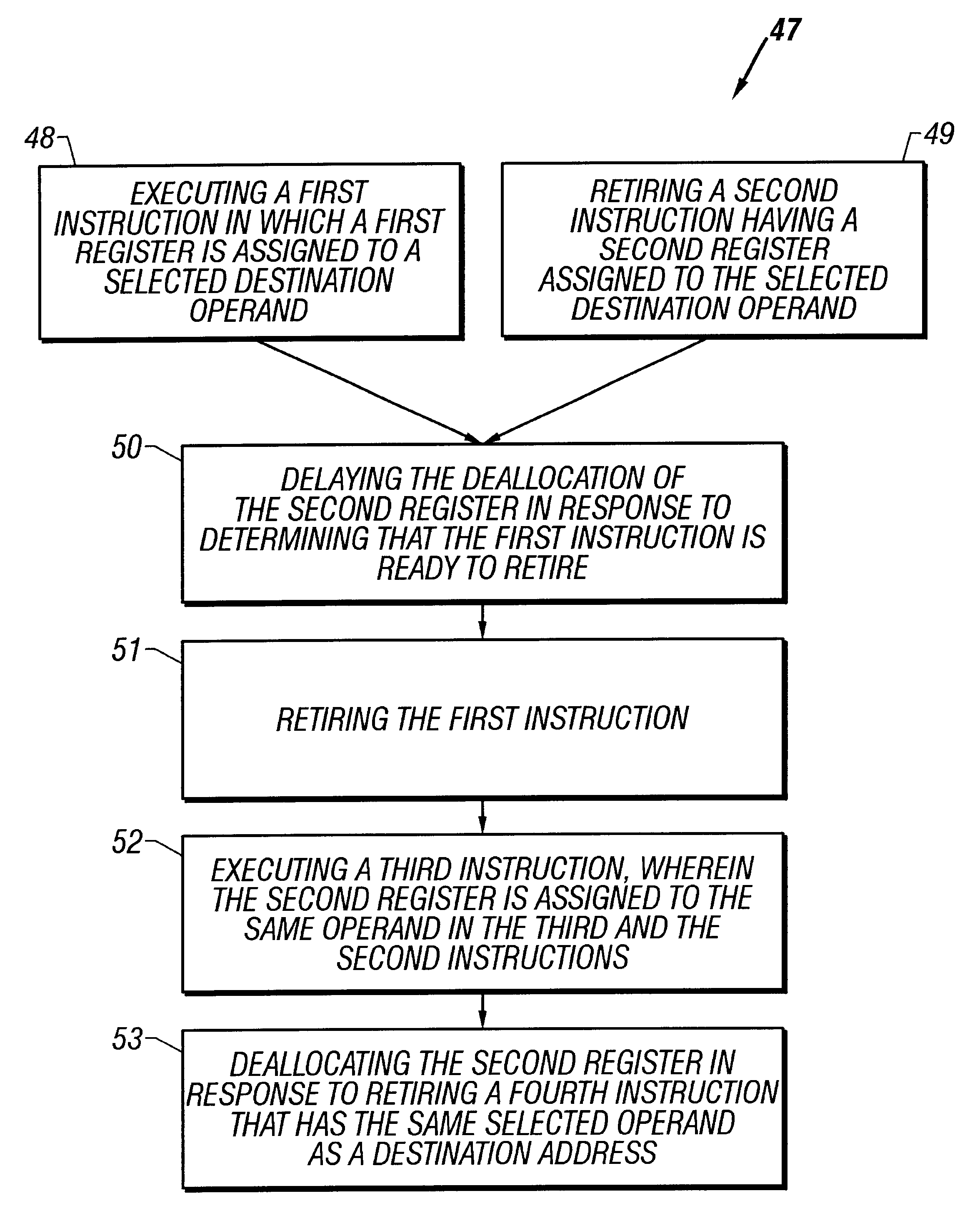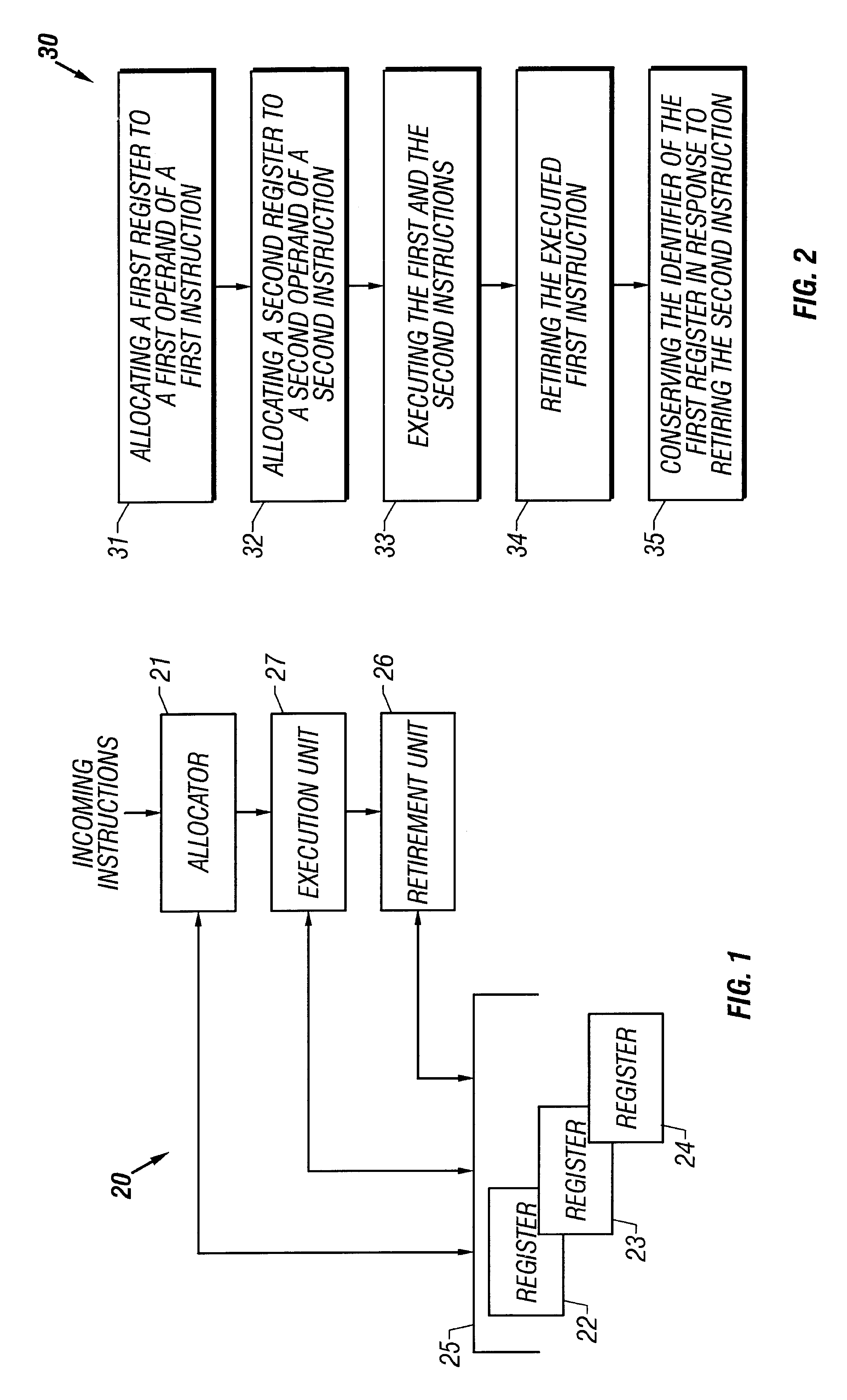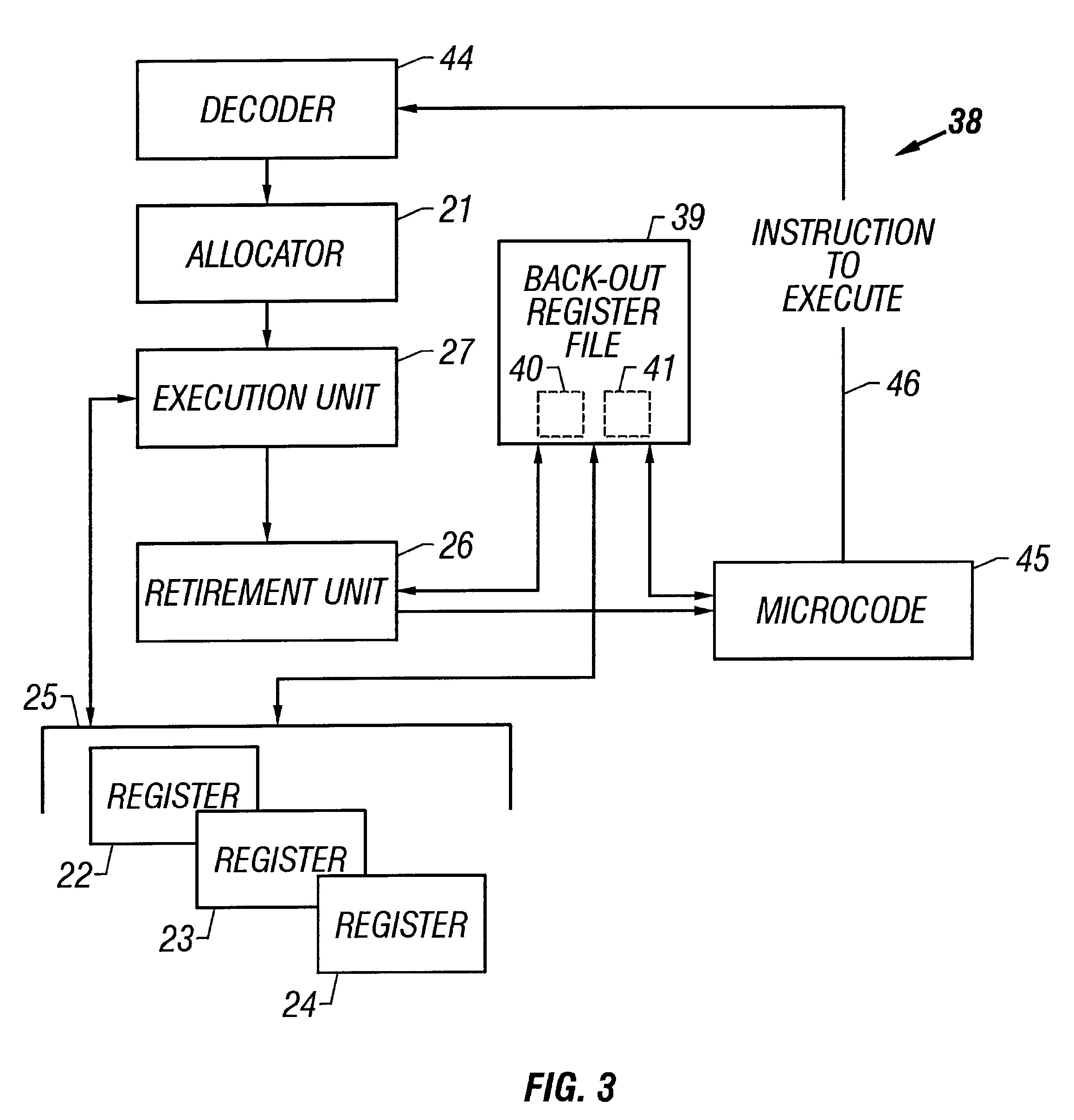Backing out of a processor architectural state
a technology of processor architecture and backwards, applied in the field of computers and processors, can solve the problems of encumbering the ordinary retirement cycle, encumbering the decoding stage, and entailing heavy area and time costs, and achieving the effect of enumerating and reducing the number of processors
- Summary
- Abstract
- Description
- Claims
- Application Information
AI Technical Summary
Problems solved by technology
Method used
Image
Examples
first embodiment
FIG. 1 is a high-level block diagram illustrating a portion of a processor 20 that delays the deallocation of selected registers. In some embodiments, the selected registers include all internal registers. An allocator 21 is a hardware device that assigns registers 22, 23, 24 to a portion of the logical operands of incoming instructions. In some embodiments, the registers 22, 23, 24 belong to a register file 25, i.e., a hardware structure for handling and directing accesses of the plurality of internal registers 22, 23, 24. A retirement unit 26 retires instructions that have been executed by an execution unit 27. The retirement unit 26 deallocates the registers 22, 23:, 24 that were assigned to the executed instructions. Deallocation makes the registers 22, 23, 24 available for assignment to new incoming instructions by the allocator 21. The retirement unit 26 delays the deallocation of a selected portion of the registers 22, 23, 24.
Still referring to FIG. 1, the registers 22, 23, 2...
embodiment 110
FIG. 8 is a flowchart illustrating a method of operating of the processor 60 of FIG. 6. At block 112, the allocator 21 receives a first instruction having a destination logical operand X. At block 114, the allocator 21 assigns a first register to the logical operand X and writes the corresponding first identifier thereof to the speculative assignment position 70 in the RAT 66 for X. Subsequent instructions with the source logical operand X will read the first register. At block 116, the retirement unit 26 retires the executed first instruction and writes the first identifier to the architectural assignment position 71 for X. At block 118, the allocator 21 writes a second identifier, corresponding to a second register, to speculative assignment position 70 for X in response to the second instruction having the address logical operand X. At block 120, the retirement unit 26 writes the first identifier from the architectural assignment position 71 for X to the back-out register 74 in r...
PUM
 Login to View More
Login to View More Abstract
Description
Claims
Application Information
 Login to View More
Login to View More - R&D
- Intellectual Property
- Life Sciences
- Materials
- Tech Scout
- Unparalleled Data Quality
- Higher Quality Content
- 60% Fewer Hallucinations
Browse by: Latest US Patents, China's latest patents, Technical Efficacy Thesaurus, Application Domain, Technology Topic, Popular Technical Reports.
© 2025 PatSnap. All rights reserved.Legal|Privacy policy|Modern Slavery Act Transparency Statement|Sitemap|About US| Contact US: help@patsnap.com



